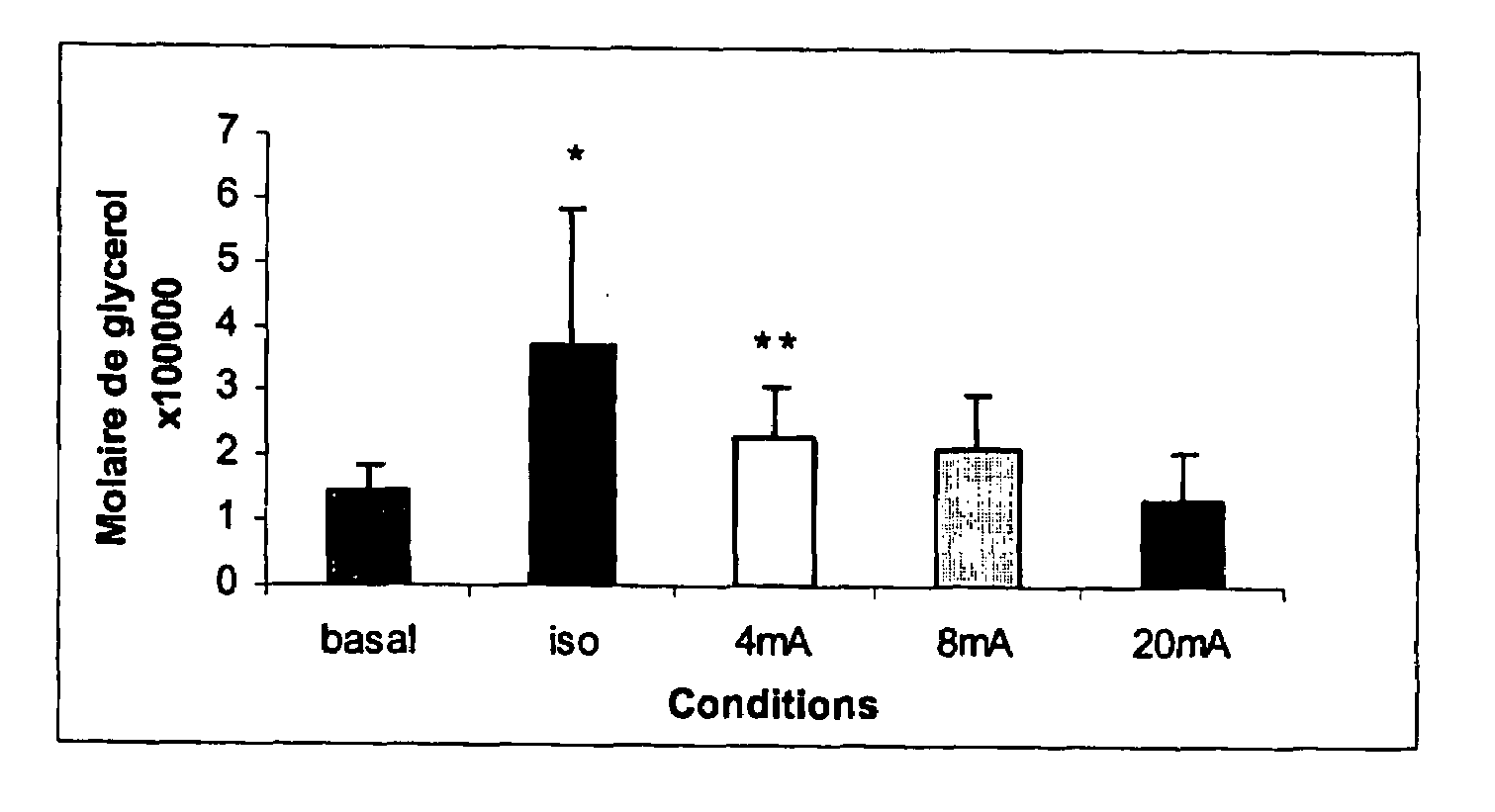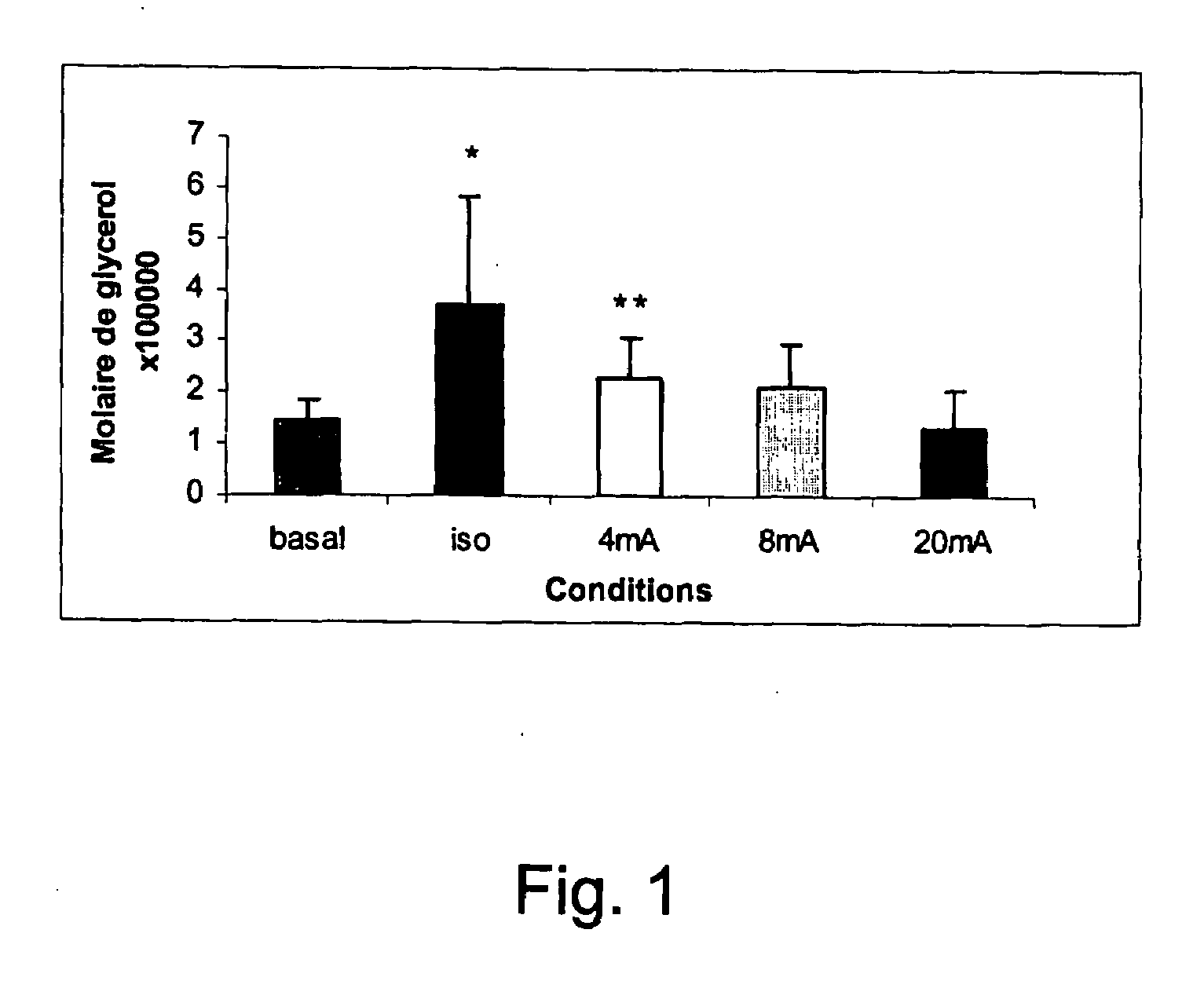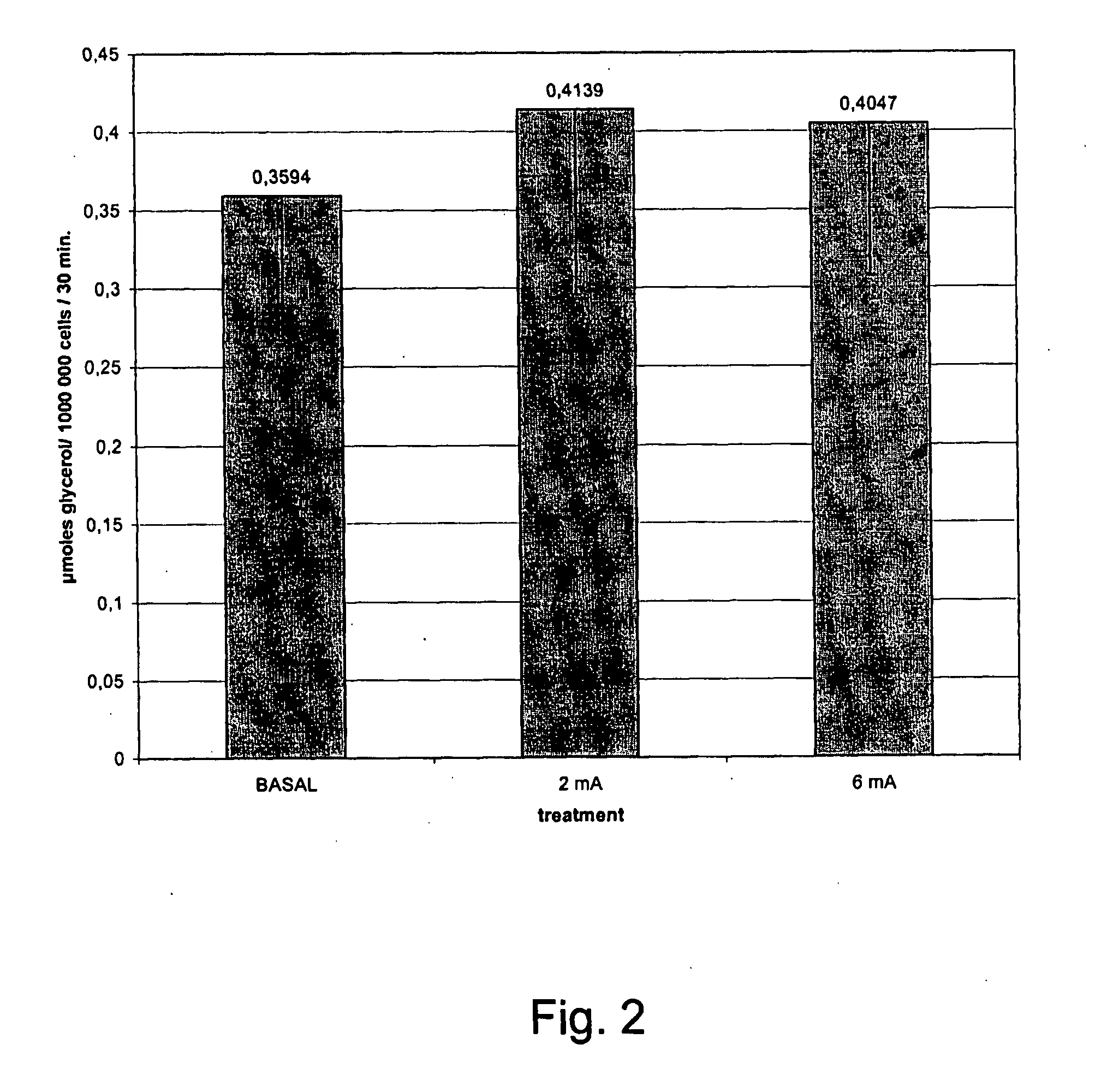Methods of Increasing Lipolysis
a cell and lipolysis technology, applied in the field of cell lipolysis, can solve the problems of increasing the number of receptors, reducing the total number of receptors, and enhancing the desensitization phenomenon, so as to increase the lipolysis and preserve the viability of the cell
- Summary
- Abstract
- Description
- Claims
- Application Information
AI Technical Summary
Benefits of technology
Problems solved by technology
Method used
Image
Examples
example i
Adipocyte Preparation for Lipolysis Stimulation and Measurement
Material and Methods
[0047]Tissue samples. Adipose tissues were obtained from 11 pre-menopaused women, aged under 45, who were undergoing liposuction or an aesthetic surgery in the supra-iliac region.
[0048]Adipocyte isolation. The adipose tissues were first placed in Krebs buffer and transported to the laboratory. Fragments of fresh adipose tissue were then incubated in a collagenase type II solution (reconstituted in Krebs buffer, 5 mg of collagenase per gm of tissue; Sigma) for 30 minutes at 37° C. under agitation (100 rpm) in a controlled atmosphere (95% O2, 5% CO2) (Rodbell, 1964). After the incubation period, the cellular suspension was filtered through a 250 μm nylon mesh and separated from the stromal and vascular fraction by flotation. The recuperated adipocytes were then washed three times with 5 mL of Krebs buffer (preheated at 37° C., without collagenase) to remove any trace of the collagenase. For the last was...
example ii
Adipocyte Lipolysis Obtained Following Electrical Stimulation
Results
[0056]Adipocytes were isolated and electrically stimulated as described in Example 1. Table 1 summarize the results obtained.
TABLE 1Statistical analysis of the data obtained (μM of glycerol)Experimental conditionBASALISO4 mA8 mA20 mAMean1.43.72.32.11.4Standard0.42.10.80.90.7deviationCoefficient of29%57%34%41%53%variationN11111147
[0057]Results presented herein show that adipocyte lipolysis was increased 2.6 fold when adipocytes were stimulated with isoproterenol compared to control values (BASAL, e.g. no treatment). At a concentration of 10−4 M, isoproterenol is known to stimulate β-adrenergic receptors, stimulate lipolysis and facilitate glycerol release.
[0058]As shown on FIG. 1, an electrical stimulation with a 4 mA current increased adipocyte lipolysis 1.6 folds above basal values (p<0.001). Lipolysis measured for the isoproterenol (ISO) condition is significantly higher than the lipolysis measured for the control...
example iii
Adipocyte Lipolysis Obtained Following Biphasic Electrical Stimulation
[0059]It was tested if biphasic electrical stimulation can induce lipolysis in adipocyte.
[0060]4 women between 40-52 years of age were used as subject. Adipose tissue was obtained from suprailiac areas through liposuction.
[0061]It is disclosed that isoproterenol (ISO) increased adipocyte lipolysis by 15% i.e. at a non significant level (FIG. 2). This data is very important since it clearly shows that the 4 women are resistant to loose fat through the β-adrenergic receptor stimulation, which is known as the main pathway of adipocyte lipolysis stimulation. On the other hand, the 6 mA biphasic stimulation significantly (through repeated T test procedures) increased lipolysis by 2.3 fold over basal thus counteracting the adipocyte β-adrenergic resistance observed with ISO. Moreover, the 4 mA biphasic stimulation increased basal lipolysis by 1.8 x thus at a lower level than the 6 mA stimulation.
[0062]These data confirm...
PUM
 Login to View More
Login to View More Abstract
Description
Claims
Application Information
 Login to View More
Login to View More - R&D
- Intellectual Property
- Life Sciences
- Materials
- Tech Scout
- Unparalleled Data Quality
- Higher Quality Content
- 60% Fewer Hallucinations
Browse by: Latest US Patents, China's latest patents, Technical Efficacy Thesaurus, Application Domain, Technology Topic, Popular Technical Reports.
© 2025 PatSnap. All rights reserved.Legal|Privacy policy|Modern Slavery Act Transparency Statement|Sitemap|About US| Contact US: help@patsnap.com



